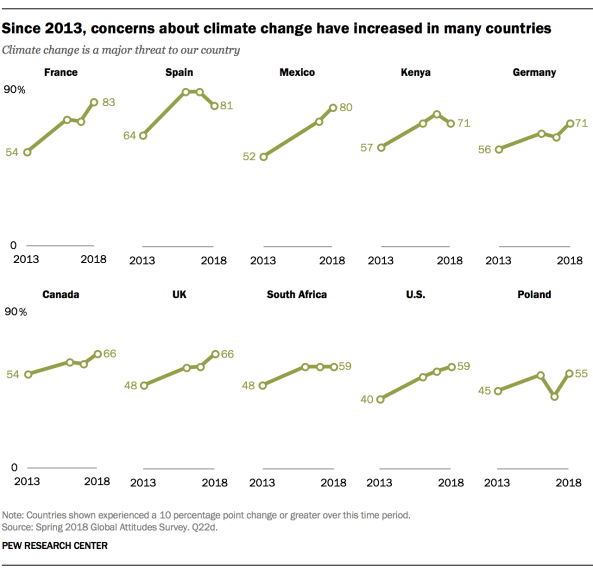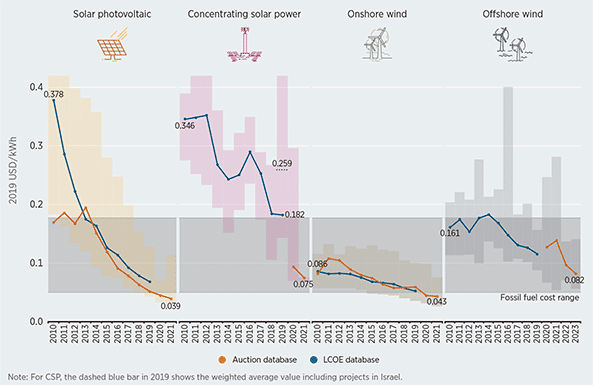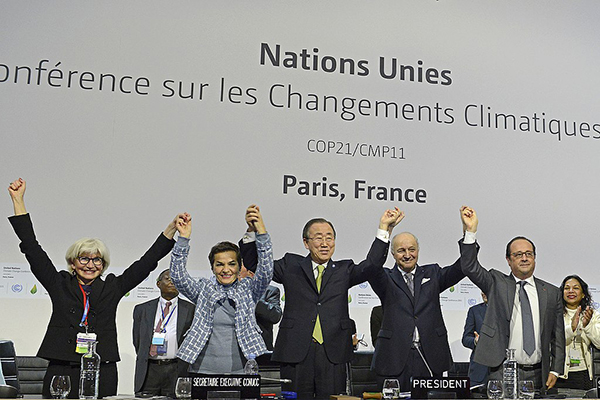Theme
Despite the Paris Agreement, there are significant emission and adaptation gaps, and climate finance is far from being aligned with climate goals. An orderly, just and profound transition is urgently needed. The COVID-19 recovery packages provide a one-off chance to help change course towards Paris.
Summary
Five years after the adoption of the Paris Agreement, this quasi-universal treaty is still seen by many as a landmark accord that, despite its non-binding commitments, could help deliver a stable climate. However, current climate actions are shockingly insufficient to deliver on the Paris Agreement’s goals given what is at stake. A new and more ambitious second round of Nationally Determined Contributions (NDCs), a robust set of rules for article 6 and Paris-aligned recovery packages could help reduce the widening gap between the collectively agreed climate goals and current actions.
Analysis
On 12 December 2020 the world celebrated the 5th anniversary of the adoption of the Paris Agreement. The accord’s main objective is to limit the worst impacts of anthropogenic climate change caused by greenhouse gas emissions. The latter largely originate from the way we produce and consume energy as well as from the way we use and transform land. So, in order to address climate change, a profound transformation of the global development model was agreed five years ago.
More specifically, the goals of the Paris Agreement include limiting mean global temperature increases to well below 2ºC and striving to limit the increase to 1.5ºC compared to pre-industrial levels. Achieving these temperature goals will require reaching a peak in emissions as soon as possible and balancing emissions and absorption of greenhouse gases (GHG) by the second half of this century. The Paris Agreement also strives to scale up adaptation, an issue that has been historically side-lined as regards mitigation. A third goal of the Paris Agreement is the alignment of financial flows with climate goals, which is key to meeting both temperature and adaptation goals.
A flurry of academic and non-academic literature hailed the Paris Agreement as a diplomatic success, after the Copenhagen fiasco. The Paris accord was the first quasi-universal legally-binding1 climate accord. Both developed and developing countries agreed to regularly present their climate commitments (Nationally Determined Contributions, NDCs). The agreement built on the principle of common but differentiated responsibilities and respective capabilities (CBDR-RC) and takes into consideration national circumstances, making it asymmetric by design. It was also acknowledged to be a dynamic and indefinite agreement. Dynamic because ambition was not enough to prevent the worst impacts of climate change, and hence required regular ratcheting-up that materialised in five-year review cycles. Indefinite because, in contrast with its predecessor (the Kyoto Protocol), it eliminated commitment periods that had to be agreed upon by Parties on a regular basis. It also established an Enhanced Transparency Framework (ETF) that will increase accountability. According to the ETF all Parties to the agreement would: report on their greenhouse gas emissions; report on the progress made towards meeting their NDCs; undergo a technical expert review; and be subject to international facilitative (ie, non-punitive) analysis of progress. Additionally, and for the first time, governments across the world committed to move towards a carbon neutral development model.
Growing pains
The world is not on track to meeting the goals of the Paris Agreement. Current commitments (NDCs) are nowhere near where they need to be in order to meet our jointly agreed temperature targets. In fact, early assessments of commitments by Parties highlighted that even if current NDCs were fully implemented, which is not happening at present, the 2ºC degree target would be missed by approximately 0.7ºC. More recent analyses estimate we are now on track to a 3.2ºC temperature increase if all unconditional pledges are implemented. It is hard to overstate the scale of the challenge. According to the 2020 Emissions Gap Report, GHG emissions (estimated at 59.1 GtCO2e in 2019) would have to be reduced to a median estimate of 41GtCO2e in 2030 to meet the 2ºC target and to 25GtCO2e to meet the 1.5ºC temperature goal.
As for meeting the goal of reaching net-zero emissions by the second half of the century, we can only hope that countries and non-state Parties that have said they would strive to become carbon neutral effectively do so. The Emissions Gap Report indicated that by November2 126 countries had committed to net-zero (127 according to a later publication by Climate Action Tracker, 2020). Some of the problems with the net-zero announcements include the vagueness of the commitments, the fact that not all countries and regions have made carbon neutrality legally binding and that 2050 (or later) is sufficiently far away to be affected by the tragedy of the horizons.3 If, however, these net-zero pledges are met, recent analysis indicate that the 2ºC goal could (almost) be within reach.
Insufficient action has been repeatedly highlighted by the United Nations Environmental Programme (UNEP) on adaptation. For instance, UNEP’s 2016 Adaptation Gap Report estimated that the gap between adaptation finance and adaptation needs was significant and expected to widen. By 2018, UNEP’s Adaptation Gap Report identified insufficient data and lack of quantified adaptation goals in national climate laws and policies as ongoing issues to be addressed, while recognising the progress made in areas such as access to basic sanitation, water and electricity. More recently, the 2020 Adaptation Gap Report recognises the progress made as regards the inclusion of adaptation planning in national climate action (and in NDC commitments especially in developing countries). Effectiveness in planning, finance and implementation of adaptation actions is, however, said to differ significantly across countries and tracking of progress and the risk reduction potential of adaptation actions remains patchy.
The goal of aligning financial flows with climate goals has gained traction in the policy agenda in the past five years. Alignment is arguably one of the most important elements of the Paris climate accord if we are to meet the temperature and adaptation goals of the Paris Agreement. The IPCC’s 1.5ºC report highlights the limited number of studies on the financial needs to deliver climate goals. Bearing in mind this limitation, the IPCC estimates that mitigation investment needed annually in the energy sector to limit global warming to 2ºC could amount to US$2.13 trillion and to a mean4 of US$2.38 trillion if the 1.5ºC temperature limit was to be met. Broader financing needs in energy, demand-side management, transport and other infrastructure to achieve the 2ºC temperature goal would amount to US$6.38 trillion annually according to the OECD.5 In contrast to these financing needs, Climate Policy Initiative estimated in 2019 that global climate finance amounted to US$546 billion in 2018, leaving a significant ‘billion to trillion’ climate finance gap to be bridged. Furthermore, it has been argued that the overall alignment of financial goals with climate goals will require that climate action be mainstreamed into decisions regarding the global stock of financial capital, estimated at US$386 trillion.6 A monumental task.
On the narrower topic of international climate finance disbursed by developed to developing countries to meet the commitments of the Paris Agreement, there has been an increase since 2015, but finance still falls short of the US$100 billion mark by 2020 initially agreed in Copenhagen and recognised by the Paris Agreement and the accompanying decision. The size of the gap amounted to US$21.1 billion in 2018 according to the OECD,7 as shown in Figure 1.

As regards financial needs for adaptation within international climate finance, UNEP (2018) estimated that annual adaptation costs could range between US$140 billion and US$300 billion by 2030 and between US$280 billion to US$500 billion by 2050. These figures largely exceed the international climate finance allocated to adaptation under the Paris Agreement. In fact, the OECD estimated that international climate finance for adaptation flowing from developed countries to developing countries under the Paris Agreement amounted to US$16.8 billion in 2018 (21.3% of the US$78.9 billion in climate finance provided by developed countries, see Figure 2). Scalability and bankability of adaptation projects are additional unresolved issues in securing that the adaptation goal in the Paris Agreement is met.

Some key developments since 2015
Beyond the extent to which there has been progress on the goals of the Paris Agreement, several developments can be highlighted since 2015.
The Paris Agreement entered into force at record speed, under a year after it was adopted. This signalled the political momentum of climate action. However, just as it entered into force, in November 2016 Donald Trump was elected the 45th President of the US. The international community joined forces behind the Paris Agreement, even if some countries such as Brazil (among others) had to be forcefully nudged by global climate-action leaders to remain in the agreement. The climate accord was here to stay and, no matter what Donald Trump’s insistence, it would not be renegotiated at the request of any single nation, despite its size or weight in the climate governance process. The negotiations of the Paris Agreement’s implementation guidelines (known as the Katowice Rulebook) continued apace with the involvement of US negotiators.8 No one wanted a set of rules that would potentially preclude the second-largest emitter from re-joining the Paris climate accord.9
America’s Obama-era climate leadership was up for grabs under a Trump Administration, with the EU-China binomial in everyone’s mind to fill the US leadership void. In the expected absence of the US in the multilateral climate regime, China signalled its intent to be the torchbearer of multilateralism while the EU forged ahead with its leading-by-example mantra and its bridge-building role. Despite some uncertainty regarding China’s climate commitment to the global climate agenda in the aftermath of the COVID-19 pandemic, Xi Jinping pledged to substantially increase China’s ambition in September 2020. This will imply reaching the peak in Chinese CO2 emissions before 2030 and reaching carbon neutrality before 2060. The EU updated its NDC (after having agreed to increase its ambition in the last European Council), pledging to reduce its emissions by 55% by 2030 compared to its 1990 emission levels. The EU also presented in March 2020 its submission of a Long-term Strategy according to which it would reach climate neutrality by 2050.
Domestically, since the adoption of the Paris Agreement, well over 100 additional climate laws and policies have been adopted globally with over a quarter of them specifically referencing the Paris Agreement. At the time of writing, 2,092 climate laws and policies have been adopted globally, more than a 20-fold increase since 1997. However, since the adoption of the Paris Agreement there has also been climate deregulation. For instance, an unprecedented regulatory rollback spree was set in motion by the Trump Administration. Columbia’s Climate Deregulation Tracker indicates that 159 executive actions have been taken to dismantle climate regulation in the US.
On a brighter note, Non-Party stakeholder actions in accordance with the Non-State Actor Zone for Climate Action (NAZCA) platform almost trebled since the adoption of the Paris Agreement, increasing from over 10,000 commitments in 2015 to 27, 513 at the time of writing. In addition, 2020 has been populated with increasingly ambitious initiatives such as the Race to Zero, a global campaign to engage non-Party stakeholders in a zero carbon recovery from the pandemic and whose members will strive to achieve net-zero emissions by 2050.
Public concern about climate change continued increasing around the world (see Figure 3 below) as scores of scientific reports, including the IPCC’s 1.5ºC report, warned about the potential impacts of missing the Paris targets. A climate emergency has been declared by just under 40 countries, nudged by youth movements and encouraged by the UN Secretary-General, António Guterres, who reminded the international community at the Climate Ambition Summit in 2020 that ‘climate action is the barometer of leadership in today’s world’.

However, along with heightened concerns about climate change came dissatisfaction with certain policies that would foster a low carbon transition and that crystallised in movements such as the Yellow Vests in France. One of the concerns voiced by this movement was the potential effect on vulnerable consumers of eliminating tax advantages on diesel. More generally, regions and sectors in transition have come forward in the past five years demanding, among others, compensation for the loss of livelihoods and business opportunities, spurring just transition initiatives around the world.
As regards the costs of renewables, they continued to drop rapidly, making them the cheapest source of power in an increasing number of locations around the world (see Figure 4 below). IRENA (2020) estimated that between 2010 and 2019 the cost of utility-scale photovoltaics (PV) fell by 82%, the cost of concentrating solar power by 47%, the cost of onshore wind by 39% and that of offshore wind fell by 29%.

Finally, the pandemic caused by the SARS-CoV-2 and its economic, social and environmental impacts brought radical uncertainty to the world, with the climate governance process being no exception. COP 26, which was set to be the most important climate gathering since Paris due to the fact that countries were expected to update their NDCs and (it was hoped) reach an agreement on article 6, was postponed for a year due to health concerns and lack of political capital to engage in climate negotiations. The continued momentum on climate change partially waned and partially migrated to on-line meetings that can limit trust building and the informal exchange of views.
What will the future hold?
In the short term, COP 26 is tasked with numerous issues, given the lukewarm outcome of COP 25 in Madrid.10 These include: agreeing on market and non-market mechanisms under article 6;11 deciding on common timeframes (duration of NDCs);12 ratcheting-up long-term climate finance; establishing mechanisms for the alignment of financial goals with climate goals through reporting and reviewing guidelines; and transparency issues, among other matters.
The prospect of making 2020 the year of ambition was postponed, along with the COP. Before COP 26 in Glasgow takes place, Parties are to present a new round of NDCs, update and enhance their NDCs or recommunicate their commitments. During the closing ceremony of the Climate Ambition Summit 2020, Alok Sharma announced that 75 countries had come forward with new climate commitments, 45 NDCs, 20 commitments to net-zero and 20 adaptation and resilience plans. Some of these commitments are summarised in Figure 5 below.Figure 5. A selection of commitments and messages from the Climate Ambition Summit, 2020
Party | Commitment/statements |
| China ‘Mountains and rivers green are mountains of silver and gold.’ (Xi Jinping) | The world should close ranks as regards climate cooperation. We should increase ambition and support, subject to the principle of common but differentiated responsibilities and respective capabilities in the light of national circumstances. Green recovery should be fostered. China’s pledges: peaking of CO2 emissions will be reached ahead of 2030. Carbon neutrality will be achieved before 2060. Lower its CO2 emissions per unit of GDP by over 65% from 2005 levels by 2030. Increase the share of non-fossil fuels in primary energy consumption to around 25%. Increase the forest stock volume by 6 billion m3 from 2005 level. Bring China’s level of installed capacity of wind and solar capacity to 1.2 billion kilowatts. |
| EU ‘Climate change is more than a European issue. It is a human issue… Let’s walk this road together.’ (Ursula von der Leyen) | GHG emissions reductions of at least 55% versus 1990 levels by 2030 and become climate neutral by 2050 with 30% of the EU’s recovery package allocated to green projects. |
| India ‘We must not only revise our ambitions but also review our achievements against the targets already set. Only then can our voices be credible for future generations.’ (Narendra Modi) | 450GW of renewable energy capacity will be installed by 2030. |
| Holy See ‘The time has come to change course. Let us not rob future generations of the hope for a better future.’ (Pope Francis) | The Vatican City State commits to net zero emissions by 2050. Promoting education for sustainability through the Global Educational Pact. Supports the Economy of Pope Francis, who promotes overcoming energy poverty. |
| IPCC ‘We are on a path risking serious, pervasive and irreversible impacts.’ (Lee Hoesung) | Commitments by countries are not enough to limit warming to 1.5ºC. The IPCC will continue working on the 6th Assessment Report and will have more knowledge to share at COP 26. But we already have enough to act today. |
| EIB ‘The EIB has decided to put climate in everything we do.’ (Verner Hoyer) | The EIB will be the first bank to be fully Paris-aligned by the end of 2020. 50% of investment will go to climate and the environment by 2025. The EIB seeks to mobilise an investment of US$1.2 trillion in climate and the environment by 2030. |
Source: Climate Ambition Summit 2020.13
In addition, under a Biden-Harris presidency the US is expected to strive for a fully emission-free power sector by 2035 and pledge to become climate neutral by 2050. The climate deregulatory spree set in motion by the Trump Administration could also be (at least partially) reverted and a green(er) COVID-19 recovery implemented. In the international arena, the US is expected to try to regain part of its leadership status by re-joining the Paris Agreement, enhancing its NDC and convening world leaders to enhance ambition, as announced by Joseph Biden. However, its two consecutive climate defaults (non-ratification of the Kyoto Protocol and temporary withdrawal from the Paris Agreement), along with historical difficulties in approving ambitious climate legislation, caution against overly optimistic long-term expectations as regards the US.
Finally, it has been argued that COVID-19 could reinforce pre-existing trends in the low carbon transition.14 Recent academic analyses suggest it is possible to harness the global climate regime under the UNFCCC to foster a green recovery and help narrow the climate commitment-action gap. For that to happen it has been suggested that the UK could make the green recovery a key theme of COP 26, urge Parties to present Paris-compatible COVID-19 recovery packages, nudge non-state actors to present shovel-ready projects that could be funded by green stimulus packages, and help craft a robust governance system for recovery packages. This governance system could help set clear guidelines regarding what is considered ‘green’, perhaps drawing on the EU’s action plan on financing sustainable growth, and help review progress towards a Paris-aligned recovery.15
Conclusions
As the world gathered to celebrate the 5th anniversary of the Paris Agreement it was clear that since its adoption the gap between commitments and goals has not been bridged. There are significant emission and adaptation gaps and climate finance is far from being aligned with climate goals, despite some progress.
A complex geopolitical context left a fragmented climate leadership landscape with a sizeable US void, only partially filled by the EU and China in the last five years. Domestically, there has been significant progress in climate legislation, with some framework laws and policies making explicit references to the Paris Agreement. A sizeable number of Parties and Non-Party stakeholders have committed to reaching net zero emissions, signalling a distant yet irreversible path towards a low-carbon development model. Underpinning these advances in climate commitments were both the improvement in the economics of renewables and a growing public concern about climate change.
The litmus test for the success of the Paris Agreement is still a long way away. However, should the world continue on the current emissions path, it is highly unlikely that our collectively agreed climate goals will be met. An orderly, just and profound transition is urgently needed. The COVID-19 recovery packages provide a one-off chance to help change course towards Paris.
Lara Lázaro
Senior Anayst, Energy & Climate Programme, Elcano Royal Institute. Lecturer, Cardenal Cisneros University College (affiliated to Madrid’s Complutense University) and IE School of Global and Public Affairs | @lazarotouza
1 The Paris Agreement is a binding instrument under international law, being in accordance with Article 2 of the 169 Vienna Convention on the Law of Treaties. Its legally binding nature applies to procedural requirements (eg, Parties ‘shall’ present NDCs) but not to substantive elements (eg, Parties are not required to meet NDC goals). See S. Oberthür & L. Groen (2020), ‘Hardening and softening of multilateral climate governance towards the Paris Agreement’, Journal of Environmental Policy and Planning, vol. 22, pp. 801-813.
2 The 126 countries that have committed to a net-zero target contribute to over half of global emissions. A figure that would go up to 63% under the Biden presidency.
3 The worst impacts of climate change will occur well beyond the time horizon of markets, policymakers and citizens, providing little incentive for prompt and decisive climate action. See Mark Carney (2015), ‘Breaking the tragedy of the horizon – climate change and financial stability’, Bank of England.
4 The mean estimate was calculated based on both Integrated Assessment Models (IAMs) and International Energy Agency (IEA) analysis for 1.5ºC scenario.
5 2015-2035 in US$ trillions at market exchange rates.
6 Note that while there are mechanisms for providing climate finance from developed to developing countries under the Paris Agreement to reach the US$100 billion mark, it has been argued in recent analyses that there are no robust mechanisms for analysing and delivering the alignment of financial goals and climate goals.
7 OECD (2020), ‘Climate finance provided and mobilised by developed countries in 2013-2018’, Paris.
8 Note that according to article 28 of the Paris Agreement the withdrawal announcement was not effective until 4 November 2020 and hence the US climate negotiators could continue attending COPs and shaping climate rules.
9 In fact, the US is expected to re-join the Paris Agreement a month after Joseph Biden is sworn in as the 46th US President, following his promise to re-join the Paris Agreement on day one of his presidency.
10 C. Streck (2020), ‘The mirage of Madrid: elusive ambition on the horizon’, Climate Policy, 20:2, 143-148, DOI: 10.1080/14693062.2020.1726564
11 L. Lázaro Touza (2020), ‘Cambio climático 2020: ciencia, tras el maratón COP 25, el Pacto Verde Europeo y legislación climática en España, ARI nr 14/2020, Real Instituto Elcano, 24/II/2020.
12 Y. Dagnet & N. Cogswell (2019), ‘Setting a common time frame for NDCs’, Working Paper, World Resources Institute, Washington DC.
13 For an infographic of some of the key announcements from the LAC region see G. Edwards (2020), https://twitter.com/GuyEdwards/status/1339014204553048064/photo/1.
14 Lázaro Touza, L. and Escribano Francés, G. (2020), The covid-19 exit strategy: fast-tracking and mainstreaming net-zero amidst wicked geopolitics. Oxford Institute for Energy Studies. Oxford Energy Forum. Issue 123: 59-63.
15 Obergassel, H. W., Hermwille, H., and Oberthür, S. (2020), Harnessing international climate governance to drive a sustainable recovery from the COVID-19 pandemic. Climate Policy. DOI: 10.1080/14693062.2020.1835603.



